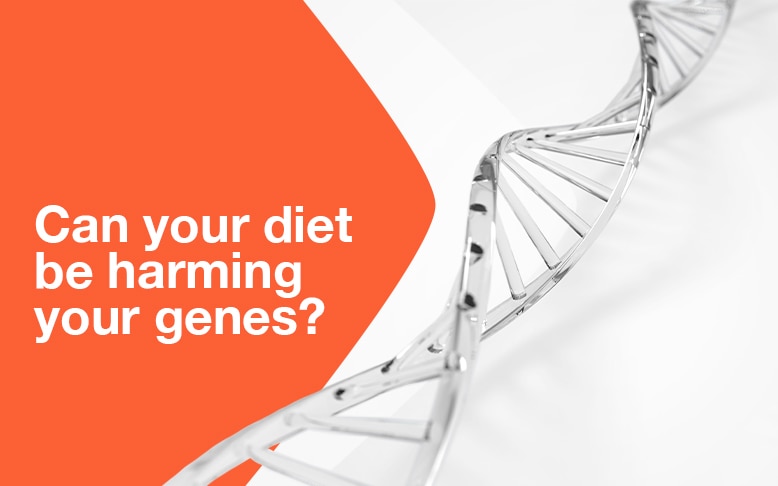Introduction

Trans fat? Is this another nutrient that consumers need to add or avoid in their plates?
The human body needs some fats from foods because they provide energy, help absorb some vitamins, and are essential to many important body functions.1,2 However, our body does not need trans fats. Trans fats do not provide any health benefits and are considered as unhealthy fats.2 In fact, trans fat is the worst kind of dietary fat.2,3 Why? Let’s find out what trans fats are and why we need to avoid them.
What is trans fat?
Trans fat, or trans fatty acids, originated in 1901 when a German chemist successfully hydrogenated a liquid fat into a semi-solid fat.4 Several years later, the use of trans fat-based products became popular among food manufacturers replacing the previously used fats, tallow and lard.4
Most trans fats are produced industrially3 while lower levels of trans fats can naturally occur in meat from ruminants, and dairy products.1,4,5 Industrial or artificial trans fats are formed from partial hydrogenation, a process that involves adding hydrogen to liquid vegetable oils to form solid oils.3,5 Fully hydrogenated oil does not contain trans fats unlike partially hydrogenated oil (PHO).5
Partially hydrogenated oils are used by food manufacturers not only to increase the shelf life of foods but also to enhance the flavor and texture as well as to cut costs.6
What are foods containing trans fats?
Industrially-produced trans fats are found in foods that use PHO as an ingredient. These include vegetable shortening, margarine, baked goods, and fried street and fast foods. Fried fast foods can contain high levels of trans fat because of the high temperature used during frying, which can increase the amount of trans fat in the oil slightly.5 Each time the oil is reused for frying, the trans fat content gets even higher.5
Below are the trans fat contents of some common foods per 100 grams of the product according to the US Department of Agriculture, Agricultural Research Service, FoodData Central, 2019.

Why are trans fats dangerous to health?
Trans fat increases your “bad“ cholesterol (low density lipoproteins or LDL) and also lowers your “good” cholesterol (high density lipoproteins or HDL).3 Thus, high intake of trans fats can increase your risk of certain non-communicable diseases (NCDs) such as heart attack, stroke, and type 2 diabetes.3,4
- Obesity - A cross-sectional study in Spain showed that higher intake of industrial-processed trans fatty acids was positively associated with overweight and obesity among 4 to 5 year-old children.8* Similarly, a six-year study showed that trans fat-fed monkeys had significant weight gain with increased intra-abdominal fat deposition than monkeys on a monounsaturated fat diet.9 Furthermore, in a study in mice fed with four different diets for 20 weeks, body weights of mice fed with high trans fatty acid diet (HTD) and high fat diet (HFD) were significantly higher compared with those fed with normal diet (ND) and low trans-fatty acid diet (LTD) at 12 and 20 weeks.10
- Cardiovascular diseases - Even small amounts of trans fats can have negative effect on heart health: the risk of heart disease increases by 23% for every 2% of calories from trans fat consumed daily.2 A review of controlled trials and observational studies show that consumption of TFA from PHO contributes significantly to increased risk of coronary heart disease (CHD) events.11 Another systematic review also revealed that total trans fat intake (industrial-processed and ruminant-derived) was associated with CHD and all cause mortality.12*
- Insulin resistance - In the same study on mice fed with four different diets mentioned above, blood glucose concentration was significantly and equally increased at 0 to 120 minutes post intraperitoneal injection of glucose in the HFD group and HTD group compared to the ND group.10 Furthermore, glucose levels at 60, 90 and 120 minutes were significantly higher in the HTD group than in the HFD group, suggesting HTD induced more significant insulin resistance compared to HFD.
- Cancer - A study involving 698 postmenopausal breast cancer subjects showed that the concentration of trans fatty acids in gluteal fat biopsies showed a positive association with breast cancer.13 Another study showed that intake of industrial-processed trans fatty acids, particularly elaidic acid from margarine intake, was associated with higher risk of rectal cancer.14
How can you avoid trans fats?
The World Health Organization recommends limiting the consumption of trans fat (industrially-produced and ruminant) to less than 1% of total energy intake.15 For someone requiring a 2000-calorie diet, for example, this means less than 2.2 g/day.
Here are some practical tips for consumers to avoid trans fats:
- Read the nutrition labels carefully. Check for the amount of trans fats. If a food contains less than 0.5 grams of trans fats in a serving, the food label can read 0 grams trans fats.3 Check also the list of ingredients if it contains PHO. If it does, then it contains trans fats. Bear in mind that eating several servings of different foods having less than 0.5 grams a serving could still add up3 and increase your trans fat intake.
- When cooking, choose healthier oils such olive, canola, peanut, corn and soybean oil. These plant-based oils mostly contain mono- and polyunsaturated fatty acids.

Consumers often ask “is coconut oil a trans fat?” and the answer is NO! It is a saturated fat that occurs naturally in food.
The next question is “is coconut oil healthy or not?”. As with many research areas, there is no straightforward answer. The American Heart Association and the WHO recommend limiting saturated fats, which are found in tropical oils such as coconut oil.16,17 In the meantime, dietitians agree that coconut oil can be a part of a healthy, balanced diet when taken in moderation. However, do read the labels. If it reads partially hydrogenated coconut oil, then the food is a source of trans fat.
Way Forward
It has been proven that mandatory national and local bans are the most effective at eliminating trans fats from the food supply.18 The US Food and Drug Administration banned artificial trans fats in 2018.19 In the Philippines, the Department of Health (DOH) and the Food and Drug Administration (FDA) reminded food companies to reformulate and eliminate industrially-produced trans fatty acids (iTFA) from their products by June 18, 2023 in compliance with DOH Administrative Order 2021-0039, the National Policy on the Elimination of Industrially-Produced Trans-Fatty Acids for the Prevention and Control of Non-Communicable Diseases, and FDA Circular 2021-028-A or the Updated Guidelines on Prepackaged Processed Food Products Containing Industrially Produced Trans-Fatty Acids (IPTFA) amending FDA Circular 2021-028 entitled 'Guidelines for Prepackaged Processed Food Products Containing Trans-Fatty Acids (TFA).20
Several Trans Fat Free Philippines bills that “recognize the right of people to safe and nutritious foods, free from trans fats,” have been filed in the Senate.21
While the policies of the government to eliminate iTFA from the national food supply are yet to be fully implemented, the best way for consumers to limit the intake of trans fats is to reduce their consumption of processed foods and fried fast foods and opt for a healthy and balanced diet composed of vegetables, fruits, whole grains, healthy fats, and lean meat.
Test Your Learning:
If your patient has 1800 kcal requirement per day, how much should be his/her allowable maximum total daily trans fat intake on the WHO guidelines?
Answer: 2.0g/day
Message to RNDs
As registered nutritionist-dietitians, let us contribute to the REPLACE package action of the WHO: REview dietary landscape and sources of industrially produced trans fat, Promote replacement with healthier types of fats, help in Legislating regulatory measures to eliminate trans fat, Assess trans fat content in the food supply, Create awareness among stakeholders, and Enforce compliance with trans fat-related policies.
Pro Tip
Limit dietary trans fat to <1% of the total kcal/day.


 Zenaida Velasco , RND, MAP
Zenaida Velasco , RND, MAP















No comments here yet.